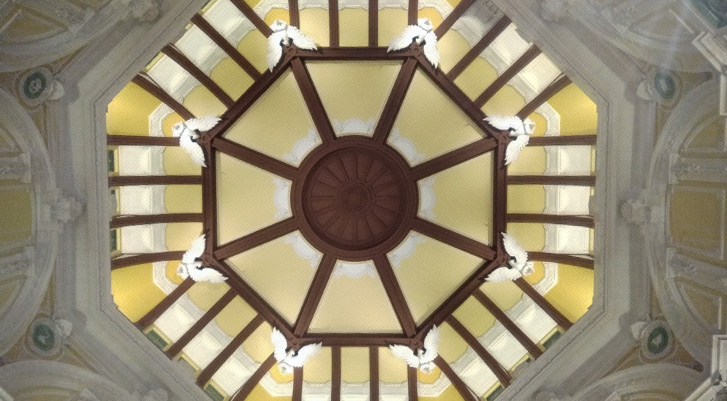
Marunouchi Dome
Preservation and Restoration of the Tokyo
Station Marunouchi Building preservation and restoration.
Tokyo Station and the Marunouchi Domes
The resplendent Marunouchi domes (North and South) adorning the Tokyo station building reflect a great mix of architectural and design elements of older Japan and modern Japan. The domes form an integral part of the imposing Tokyo Station building that marks the gateway to Japan and Tokyo. The building, which faces the Imperial Palace (or the Kyoko), is an architectural masterpiece. The station building, including the iconic Marunouchi domes, was designed by Kingo Tatsuno, who is regarded as the father of modern Japanese architecture. The interiors of the domes, like their exteriors, were extensively reconstructed after World War II.
The octagonal dome, which strikes a good balance between a circle (maru in Japanese) and a basic square, is adorned by Zodiac animal reliefs along with intricate eagle and flower reliefs at each of the corners. The octagonal arrangement was also used extensively in Islamic and Christian architectural forms (e.g., the Dome of the rock in Jerusalem, tomb of Firuz Shah in northern India, St. Basil’s Cathedral in Moscow). Further, the number eight bears special significance in Hinduism and well as in Japanese culture. In Hinduism specific deities stand guard at each of the eight directions signified by the eight corners of the octagon (Ashtadikpala in Sanskrit). In Japan, the number: eight, is considered auspicious given that the kanji (adopted logographic Chinese characters in the Japanese writing system) for the number eight represents the iconic Mt. Fuji (八). Accordingly, Toyota motor corporation chose to name of the company as ‘Toyota’ and not ‘Toyoda’ following the actual family name: Toyoda, given that writing Toyota in kanji necessitated eight brush strokes versus the ten required in writing Toyoda (the original family name).

